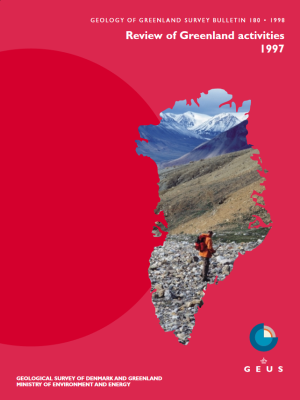Late Quaternary palaeo-oceanography of the Denmark Strait overflow pathway, South-East Greenland margin
DOI:
https://doi.org/10.34194/ggub.v180.6514Abstract
Direct interaction between the atmosphere and the deep ocean basins takes place today only in the Southern Ocean near the Antarctic continent and in the northern extremity of the North Atlantic Ocean, notably in the Norwegian–Greenland Sea and Labrador Sea. Cooling and evaporation cause surface waters in the latter region to become dense and sink. At depth, further mixing occurs with Arctic water masses from adjacent polar shelves. Export of these water masses from the Norwegian–Greenland Sea (Norwegian Sea Overflow Water) to the North Atlantic basin occurs via two major gateways, the Denmark Strait system and the Faeroe– Shetland Channel and Faeroe Bank Channel system (e.g. Dickson et al. 1990; Fig.1). Deep convection in the Labrador Sea produces intermediate waters (Labrador Sea Water), which spreads across the North Atlantic. Deep waters thus formed in the North Atlantic (North Atlantic Deep Water) constitute an essential component of a global ‘conveyor’ belt extending from the North Atlantic via the Southern and Indian Oceans to the Pacific. Water masses return as a (warm) surface water flow. In the North Atlantic this is the Gulf Stream and the relatively warm and saline North Atlantic Current. Numerous palaeo-oceanographic studies have indicated that climatic changes in the North Atlantic region are closely related to changes in surface circulation and in the production of North Atlantic Deep Water. Abrupt shut-down of the ocean-overturning and subsequently of the conveyor belt is believed to represent a potential explanation for rapid climate deterioration at high latitudes, such as those that caused the Quaternary ice ages. Here it should be noted, that significant changes in deep convection in Greenland waters have also recently occurred. While in the Greenland Sea deep water formation over the last decade has drastically decreased, a strong increase of deep convection has simultaneously been observed in the Labrador Sea (Sy et al. 1997).
Downloads
Published
Issue
Section
License
This article is distributed under a CC-BY 4.0 licence, permitting free redistribution and reproduction for any purpose, even commercial, provided proper citation of the original work. Author(s) retain copyright over the article contents.


